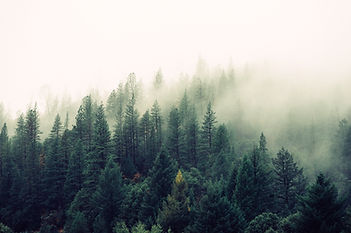top of page

Le Mont-Saint-Michel
Le Mont-Saint-Michel is a fascinating and mysterious place. It is an island of rock that rises from the sandy sea bed, just off the coast in the région of Normandie, northern France. A monastery is built high on its summit. This building is called l'Abbaye du Mont-Saint-Michel.
The mount and the surrounding bay have the status of le Patrimoine Mondial de l'UNESCO - a World Heritage Site.
Depending upon the tide, the mount is either surrounded by sea or by sand. If you decide to walk across the sand to reach the island, you had better be careful because the sea water can come rushing back in again and could take you by surprise! It is the place with the highest tides in Europe. There can be a difference of 15 metres in depth between high and low tides!

Many people believe that the mount was not always an island. A legend tells us that, in ancient times, it was a hill in a vast and beautiful forest called la Forêt de Scissy. A huge tidal wave flooded the area, leaving just the highest land above water and creating the island we see today.


Why is the island named after Saint Michael?
According to a legend, in the year 708 AD, a man called Aubert who was the bishop of Avranches, had a dream in which the Archangel Michael appeared to him and instructed him to build a church on the summit of the mount. The bishop ignored the dream.
However, the Archangel Saint Michael returned on the following night and repeated the message. Once again, the bishop chose not to obey.
On the third night, the Archangel appeared once more and this time he placed his finger on the bishop's head whilst repeating his message. When the Archangel's finger touched the bishop's head, it burned him and shocked him into taking the message seriously.
As a result, the bishop organised the building of a church on the mount's summit.
The bishop is now known as Saint Aubert. In the town of Avranches, where the bishop lived, there is a church called la Basilique Saint-Gervais d'Avranches. Inside this church there is the holy relic of Saint Aubert's skull - le crâne de Saint Aubert. Interestingly, the skull has a round hole in the bone, believed to have been caused by the finger of the Archangel, Saint Michael!

Image above: from an engraving depicting the third visit of the Archangel Michael to the bishop.
It is believed that the island is haunted.
On the morning of 17 June 1434 the island was attacked by thousands of English soldiers.
The person in charge of protecting the island was called Louis d'Estouteville. It was the time of the Hundred Years' War and le Mont-Saint-Michel had strong buildings and French soldiers to protect the island's church from the threat of enemy attacks.
On that morning, it looked as though the island would fall to the English soldiers who came charging from the sands below.
The French soldiers and their leader Louis somehow found great strength. Even though their number was small, they charged with force at the enemies, whilst shouting out the name of the Archangel St. Michael - "Saint Michel! Saint Michel!"
The English were defeated.
After the battle, Louis d'Estouteville looked down from his fortress and observed the thousands of fallen English soldiers, lying on the sands all around.
It is believed that the ghost of Louis d'Estouteville remains on the island and watches over it to protect it from enemies!
Some Interesting Facts
1. Le Mont-Saint-Michel is not the only famous place that is named after a visit from the Archangel Michael. In Rome, il Castel Sant'Angelo and its bridge were given the name 'Holy Angel' in recognition of the apparition of the Archangel Michael on top of the building in the 6th. century.
2. There is a small version of le Mont-Saint-Michel in Cornwall, England. It is situated on the opposite side of the English Channel and experiences the same tides. It is called St. Michael's Mount and it can be reached on foot at low tide.
William the Conqueror organised the building of a Norman church on its summit. He believed that this would replicate the power of le Mont-Saint-Michel and protect the English coast from enemy attacks.

3. St. Joan of Arc was inspired by the story of le Mont-Saint-Michel. It seemed to be a place that could not be defeated by enemies as it was protected by Saint Michael. He was one of the saints who appeared to Joan of Arc in visions and commanded her to lead the French army against the English enemies.
4. The tides around the mount have always been feared. Centuries ago, the island was a major site for pilgrims who would flock across the sands to reach the holy mount of Saint Michael. It used to be nicknamed 'St. Michael in Peril of the Sea' - Saint Michel au Péril de la Mer.
5. There is now a bridge that leads from the Normandy coast to the mount. It is called le pont-passarelle du Mont-Saint-Michel. (Picture below)

6. The famous writer Victor Hugo loved le Mont-Saint-Michel and campaigned for the monastery to be renovated as it had fallen into disrepair. He also described the tides around the mount as "à la vitesse d'un cheval au galop" - at the speed of a galloping horse.
7. The Archangel, Saint Michael is the patron saint of Normandy - Normandie. His feast day, la Saint-Michel, is celebrated on 29 September.
8. The original name of the mount was Mont Tombe. After the apparition of the Archangel, its named was changed.
Famous Places in France
Mystery Zone

bottom of page